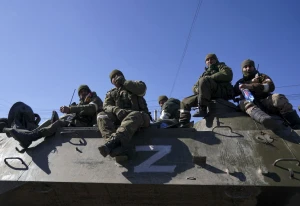
Hungary’s disinformation campaign plays into Kremlin’s hands in its war on Ukraine
Hungarian politicians and some mass media spread fakes and anti-Ukrainian narratives
The Hungarian media launched a disinformation campaign against Ukraine and the Ukrainian Armed Forces, according to a message posted by the Center for Countering Disinformation at the National Security and Defense Council of Ukraine. The Insight News Media analyzed what kind of media it is and the stories it propagates.
KarpatHir’s disinformation campaign against Ukraine
The website Karpathir.com, a Hungarian-language publication on the Transcarpathia, is the one that aggressively disseminates provocative content. According to the website's material, the media is based in Uzhhorod and is supported by the Magyar Szv - Magyar Szó foundation, which promotes Hungarian cultural heritage and Carpathian communities.
The newspaper has recently run a number of articles with provocative headlines that criticize the Ukrainian military and administration. Their main argument is that the Ukrainians are sending Hungarian national community representatives to their deaths in an effort to resolve internal issues.
The article "Men in Transcarpathia are herded like cattle" in the newspaper PestiSracok focused on the same issues and included a whole report shot there.
Journalists from PestiSracok don't show their interviewee. The man talks of the "horror life of Transcarpathian Hungarians under the persecution of the Kyiv authorities.". His voice was also modified “at his request for security reasons”. This story is consistent with the Kremlin's anti-Ukrainian propaganda.
The plot's emotional element takes precedence over its factual component. The entire text is filled with evaluations based on the statements of the obscured person.
In a coffeehouse, uniformed individuals are there. According to PestiSracok, people in a place dubbed "The Cube'' in Berehove are experiencing nightmares brought on by the police and the military. Such a place doesn't exist in Berehove. Nevertheless, there is one in Uzhhorod, a pizza by the name of "Kub'' that has a look strikingly similar to the one in the picture.
The authors probably mistook Uzhgorod for Berehove because it is where the largest Hungarian minority community in Transcarpathia, Ukraine, is located. This supports their claim that a large number of Hungarians were mobilized to join the Ukrainian army.
The news was covered by several Hungarian periodicals, including Origo, Sonline, Promenad24, Magyar Nemzet, and Mandiner. The Russian media also kept up with them. Based on the allegations of local Hungarian media, another false tale about the "criminal" mobilization of Hungarians in Transcarpathia is aggressively being propagated in the Russian information space.
At the same time, news of the losses suffered by the 128th Mountain Infantry Brigade, stationed in the Transcarpathian city of Mukachevo, was widely reported in Hungary's mainstream media.
“Hundreds of dead soldiers’ bodies are stored in refrigerated wagons in Transcarpathia, just a few hundred meters from the border with Hungary”
They claim that Mukachevo morgues are overflowing and that the Ukrainian government is forced to keep bodies for several weeks or months in freezers close to the Hungarian border.
The journalists acknowledge that they were unable to locate the freezers. However, they refer to the Al-Jazeera video report dated May 9, 2022. But in reality the vidoe depicts refrigerators filled with dead Russian Armed Forces troops that the Russian authorities refuse to take.
Hungarian government supports disinformation spread by media
The tales in the media were also endorsed by Hungarian politicians. Peter Szijjarto, the Minister of Foreign Affairs, claimed that Transcarpathian Hungarians were being "harshly" drafted into the armed forces and that many of them were dying, particularly as a result of severe casualties in the aforementioned 128th brigade.
Szijjarto asserts that this is taking place as a result of Budapest's insistence on peace talks, which Kyiv rejects.
At the same time, Tamas Mentser, State Secretary for Bilateral Relations at the Hungarian Ministry of Foreign Affairs, charged that the Ukrainian government had failed to halt anti-Hungarian activities in Transcarpathia, which would have prevented Ukraine from joining the European Union. Both the Russian and Hungarian media extensively covered the statements made by Szijarto and Mentser.
Anti-Ukraine protest in Budapest
A demonstration scheduled on January 28 in front of the Ukrainian embassy in Budapest was planned to become the culmination of the anti-Ukrainian campaign in Hungary.
The protest was organized by the group "Hungarian Community for Peace." According to them, the demonstration was directed against the "Kyiv regime" and “anti-Hungarian Ukrainian neo-Nazi government” for using Transcarpathian Hungarians as "cannon fodder" in the war.
However the anti-Ukrainian rally in Budapest failed as it was joined only by a small group of people. Less than two dozen of “activists” were outnumbered by journalists and bloggers who gathered to cover the protest.
Such Russian-backed political and media campaigns in Hungary try to incite inter-ethnic hostility between Ukrainians and Hungarians in Transcarpathia, and these messages are widely replicated in Russian media.
For Hungary, promoting the topic of “oppression” by Ukrainians is flirting with Viktor Orban’s electorate, followers of “Greater Hungary” and Trianon revanchism. For Moscow, this is a typical propaganda offensive aimed at destabilizing Europe and undermining its efforts to support Ukraine.
- News












































